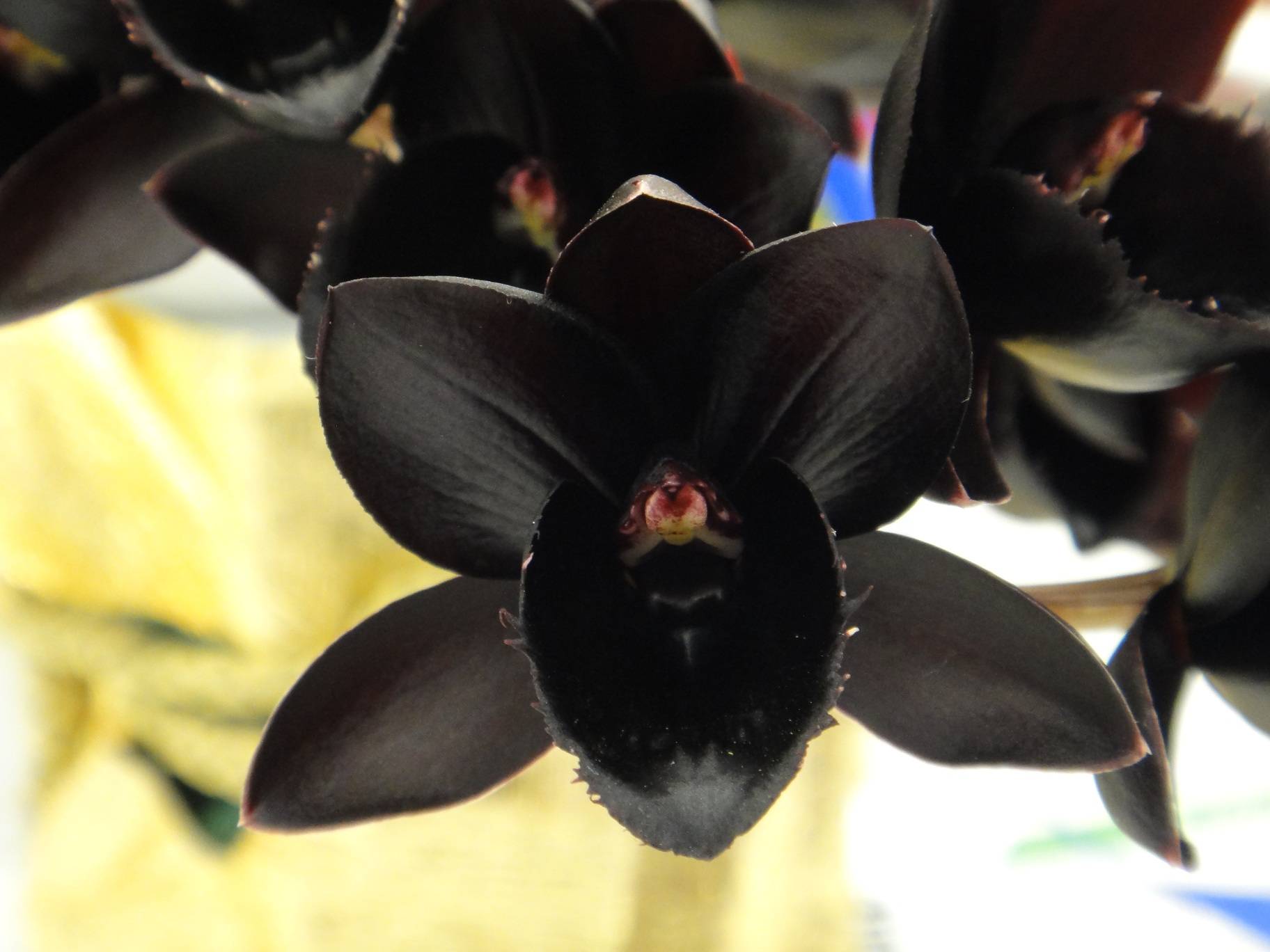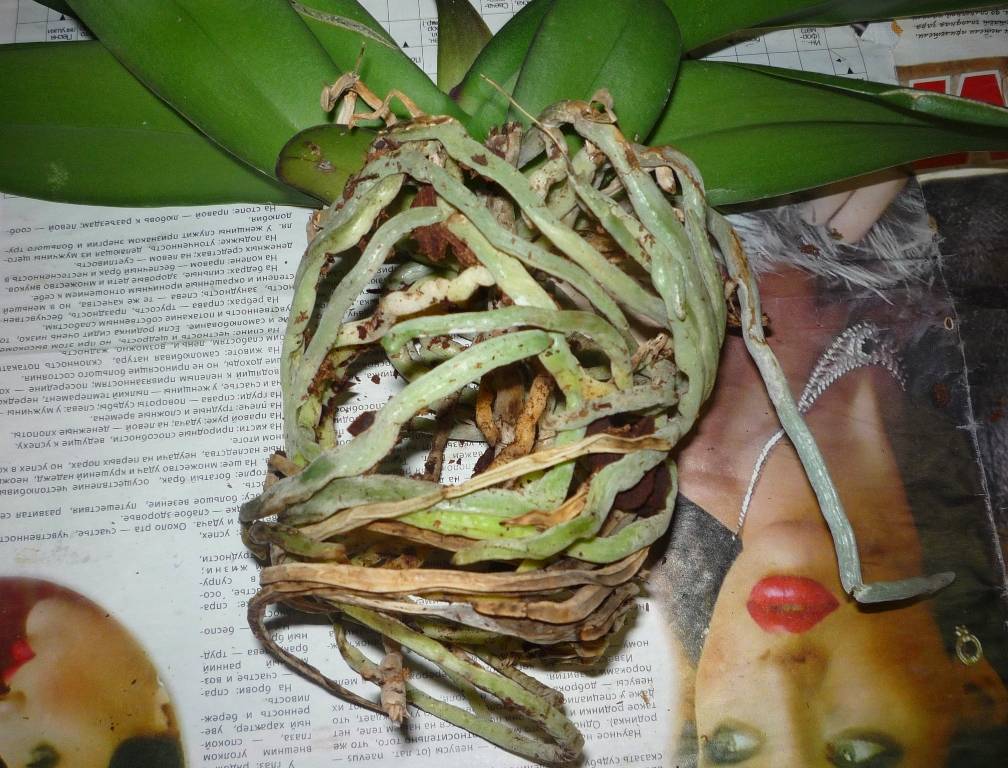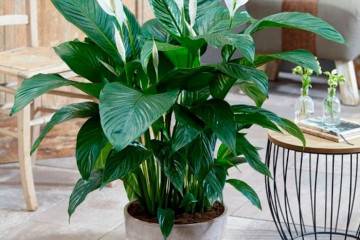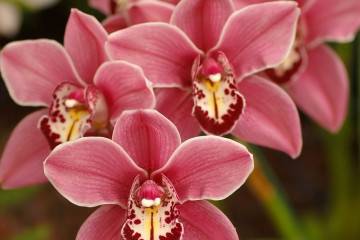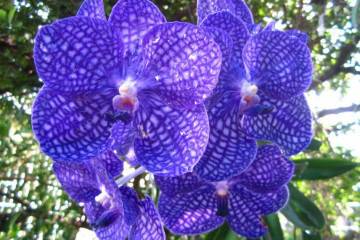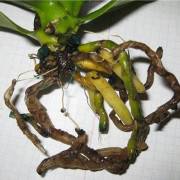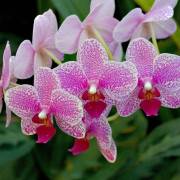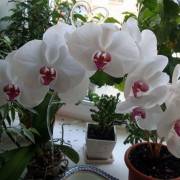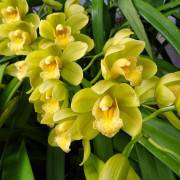Phalaenopsis black orchid - description and types
Content:
The black orchid is a very rare and exotic flower. It is shrouded in various myths and beliefs. Scientists are still arguing about the origin of the plant. Most of them are sure that this is not a black color of the petals, but a dark purple.
Characteristic
Biologists disagree about whether plants with black petals are found in nature. Many are sure that no, and similar orchids were obtained in the course of selection.
In fact, if you look closely, you can see: Phalaenopsis black is actually dark purple, maroon or dark blue. This type includes different varieties.
Black bird
The plant is short, about 40 cm. The flowers themselves are small, up to 4 cm in diameter. The color is rich blueberry, almost black.
Black Prince
The most beautiful representative. It has the darkest petals that have a white core. The diameter of the flowers is 7 cm, the length of the peduncle is up to 50 cm. The leaves of this species are almost invisible.
Phalaenopsis Prince will be appreciated by true connoisseurs of orchids. The number of flowers on one stem depends on the care of the plant and the conditions of keeping. With their proper organization, the plant will bloom profusely.
Black Pearl
The leaves of the variety are almost emerald, and the number of flowers on one stem reaches four. The petals are purple-burgundy.
Black Widow
Inflorescences are small, they are collected on a peduncle 3-4 pcs. The petals are a deep navy blue that looks like black.
Landing
The black orchid had a magical effect on many.
Tom Ford perfume does not lose its relevance. Therefore, many people are looking for the plant that inspired him to create the composition. But for the orchid to bloom, special conditions are needed.
Landing is carried out in loose soil. To do this, mix crushed dry bark, coal, sphagnum, peat. All components are taken in equal parts.
The pot should be 1-2 cm larger than the root system. A container that is too spacious is not needed, otherwise the plant will begin to actively develop green mass.
Watering
Phalaenopsis orchids need moist soil. Therefore, in the summer, the pot is watered 2-3 times a week. It is advisable to plant the plant in a transparent container, this will allow you to monitor the condition of the roots.
You can use the pallet irrigation method. To do this, the pot is placed in a bowl of warm water and left for 20 minutes. After the orchid is pulled out and allowed to drain off excess moisture.
Reproduction methods
The easiest breeding method is to divide the bush. When transplanting, pseudo-bulbs are carefully separated and seated in different pots. Black orchid still propagates by cuttings. For this, peduncles are chosen after flowering.
They have dormant kidneys. It is with them that you need to cut off a section of the stem. Then the cutting is planted in the ground and covered with a glass jar.
Top dressing
The black orchid is a beautiful flower that immediately attracts attention.In order for it to show all its beauty, fertilizers are needed. To do this, it is better to use formulations that are designed specifically for orchids.
They are brought in during the flowering period once every two weeks. During the rest period, the number of dressings is reduced to once a month.
You should not overuse fertilizers, since an excess of minerals is just as dangerous as a deficiency.
Transfer
You can transplant an orchid only after flowering ends. For this, the plant is carefully removed from the pot.
The roots are examined and damaged parts are removed. After the orchid is planted in a new pot, which is then placed in a dark place for 3-4 days. This is necessary for the plant to rest and cope with stress.
Pruning
After flowering, dried peduncles are removed so that the plant does not waste its energy on it. Leaves that have lost their appearance and began to turn yellow must be removed.
On older orchids, you can remove the top and root it. This will rejuvenate the plant.
Pests and diseases
Different plants, even with good care, can be affected by parasites. But some pests appear only with improper care. With an insufficient level of moisture, orchids are affected by spider mites. It can be easily identified by the cobwebs on the leaves.
Sometimes aphids appear on orchids. It can be found during normal inspection, these are small green insects. To get rid of these pests, use a soap solution. To do this, dissolve 100 g of laundry soap in 1 liter of warm water. The mixture is sprayed on the plants.
An excess of moisture is as dangerous as a lack of moisture. When waterlogged, root rot develops, which can destroy the plant. It can be determined, since the roots turn black and gray spots appear on the leaves. For treatment, the plant is transplanted, the affected areas are removed and treated with fungicides.
Another sign of waterlogged soil is the appearance of black spots on the foliage. With this symptom, you need to remove the diseased parts of the plant and stop for the duration of watering.
Flowering period
During flowering, all plants are very sensitive to their environment. Therefore, during this period, you need to organize good care. The description of varieties does not always give a complete picture of the beauty of certain specimens.
The approximate air temperature should be at 22 ° C, and the humidity should be 40%. For this, the plant is not only watered abundantly, but also regularly sprayed.
The orchid room is ventilated once a day. A constant supply of oxygen is essential to improve flowering.
Orchids need long daylight hours. To do this, they are placed on a windowsill or illuminated with phytolamps. An orchid needs 12 hours of light per day. It can exude an unobtrusive floral scent.
Phalaenopsis black is rarely found in collections, but such flowers are very unusual and beautiful. Not only Tom Ford was captivated by this plant. Such flowers can become the pearl of everyone's home composition.
